This article was co-authored by Laura Marusinec, MD. Dr. Marusinec is a board certified Pediatrician at the Children's Hospital of Wisconsin, where she is on the Clinical Practice Council. She received her M.D. from the Medical College of Wisconsin School of Medicine in 1995 and completed her residency at the Medical College of Wisconsin in Pediatrics in 1998. She is a member of the American Medical Writers Association and the Society for Pediatric Urgent Care.
There are 11 references cited in this article, which can be found at the bottom of the page.
This article has been viewed 369,840 times.
A sore throat does not automatically mean you have strep throat. In fact, most sore throats are caused by viruses, which go away on their own. Strep throat, on the other hand, is an infection caused by a bacteria that requires treatment with antibiotics. Learning to recognize the symptoms of strep throat will help you seek the proper medical attention you need.
Steps
Recognizing Symptoms
-
1Note any throat pain. Strep throat is a contagious infection caused by streptococcus bacteria.[1] The hallmark symptom of strep throat is a sore throat, but it’s far from the only symptom.
- You may experience pain or difficulty swallowing.
-
2Open your mouth and examine your throat. In addition to a severe sore throat that starts quick, your throat tonsils may look red and swollen, sometimes with white patches or pus. You may also have tiny red spots on the area at the back of the roof of the mouth.[2]Advertisement
-
3Feel your neck. The infection will also cause the lymph glands in your neck to swell. If you feel around your neck, you’ll likely notice the swelling, which will also be tender to the touch.[3] Pay particular attention to the glands in the front of your neck, under your jaw at either side of your airway.
- Swollen lymph glands will feel like small, hard lumps underneath your skin.
-
4Pay attention to your breath. Strep throat or other throat infections can cause bad breath.[4] Your infected tonsils will begin to secrete dead white blood cells, which give off a particular protein-like odor.
-
5Take your temperature. Fever and chills are two more distinctive symptoms of strep throat. The fever is usually highest on the second day of the infection as your body responds.[5]
- Normal body temperature is 98.6°F (37°C). Fluctuations greater than one or two degrees Fahrenheit (one-half to one degree Celsius) are a sign that you might have an infection.
- If you have a fever over 101°F (38.3°C) or a fever lasting more than 48 hours, call your healthcare provider.[6]
-
6Look for additional flu-like symptoms. Anytime your immune system responds vigorously to an infection, you may also experience generally flu-like symptoms. These symptoms may include:[7] [8]
- Rash, usually on the chest with the look and feeling of sandpaper
- Headache
- Fatigue
- Stomach ache, nausea, or vomiting (especially in children)
-
7See your doctor. Ultimately, your doctor will have to diagnose whether or not your illness is strep throat or caused by something else. Your body will begin clearing most viral infections that can cause similar symptoms within a day or two (not completely but a noticeable difference), so you should especially see your physician if symptoms persist at the same severity for more than 48 hours.
Treating Strep Throat
-
1Take an over-the-counter (OTC) pain medication. OTC painkillers such as ibuprofen and acetaminophen can help reduce pain and fever.[9] Take these medicines with food if possible, and do not exceed the manufacturer’s daily dosage.
-
2Gargle with salt water. Salt water can also help alleviate strep throat pain. Mix about ¼ teaspoon of salt into a tall glass of warm water. Take the salt water in the back of your mouth, tilt your head back, and gargle for thirty seconds. Spit the salt water out after the back of your throat is coated.[12]
- Repeat several times a day as needed.
- For younger children, ensure that they understand not to swallow the salt water.[13]
-
3Stay hydrated. Many people can become dehydrated when they have strep throat because the painful swallowing stops them from drinking. However, keeping your throat lubricated will actually help reduce pain associated with swallowing.[14] Though it may be unpleasant at first, drink plenty of water.
- Some people may find warm liquids more soothing than cold water. You may also want to try warm (not hot) tea with lemon or honey.
-
4Sleep. Sleeping is one of the best steps you can take at home to help your immune system battle an infection. Stay home from work or school and get lots of rest.[15]
- Since strep throat is highly contagious, you should also stay home to help avoid spreading the infection to peers.
-
5Use a humidifier. Your throat drying out overnight can lead to an especially painful sore throat first thing in the morning. A humidifier will add more moisture to the air while you sleep (or even as you’re resting at home during the day), helping to reduce the pain of your strep throat.[16]
- Ensure that you clean a humidifier daily during use since they’re ideal environments for bacteria and mold.[17]
-
6Use a lozenge or spray. Throat lozenges and sprays designed to help with sore throat symptoms can also help reduce sore throat pain and painful swallowing. These products can help coat the throat to reduce irritation or slightly numb your throat to alleviate symptoms. Use as directed.
- Do not give lozenges to children under age 4, as they are at risk for choking.
-
7Choose easy-to-swallow foods. Hard, dry foods that can scrape and irritate your throat will be more painful to swallow. Soups, applesauce, yogurt, and mashed potatoes are just a few foods that might be easier on your throat to swallow.[18]
- You should also avoid spicy foods until your symptoms subside.[19]
-
8Avoid throat irritants. Irritants to your throat—especially smoking and exposure to secondhand smoke—can cause additional throat pain.[20] Other irritants you should avoid while you have strep throat include paint fumes and fumes from cleaning products.
-
9See your doctor. If symptoms persist, then you should see your doctor because strep throat can spread, leading to the bacterial infection in other parts of the body or other complications of your heart, kidneys, or joints. Your doctor will be able to perform a quick swab of your throat to determine your diagnosis, or he or she may also have a lab do a culture of a swab sample.[21] If the test comes back positive, then your doctor will likely prescribe a course of antibiotics.
-
10Take the full course of antibiotics. Your physician will likely prescribe a ten-day course of antibiotics (though this can vary based on the antibiotic). Common antibiotics for strep throat include penicillin or amoxicillin unless you have an allergy to them, in which case he or she will likely prescribe cephalexin or azithromycin.[22] When taking antibiotics:[23] [24]
- Take as directed until the prescription is gone. Skipping doses or stopping because you feel better can increase the chances of recurrence, as well as helping to produce antibiotic-resistant bacteria.
- See your doctor again immediately if you experience an allergic reaction to the antibiotic, with symptoms such as hives, vomiting, swelling, or trouble breathing, or if your symptoms have not started to improve within forty-eight hours of beginning your course of antibiotics.
- Do not return to work or school for at least twenty-four hours. You will still be contagious until you’ve been on the antibiotic for at least a full day.
Preventing the Spread of Strep Throat Infection
-
1Wash your hands often. As with most infections, washing your hands well and often is one of the best preventative measures you can take.[25] This goes double if you have strep throat and want to ensure that you do not spread it to those around you.
-
2Cover your mouth when coughing or sneezing. Any time you cough or sneeze while battling a strep throat infection, you expel the bacteria, potentially spreading it to those around you. Make sure you take extra steps to cover your mouth whenever you cough or sneeze. Using your sleeve rather than your hands helps reduce the spread of germs even more, but if you must use your hands, ensure that you wash them immediately after.[26]
-
3Avoid sharing personal items. Eating utensils, cups, and anything else that goes near your mouth will have an even higher risk of potentially spreading strep throat to others. Avoid sharing these items and wash them in hot, soapy water to kill the bacteria.[27]
- After you finish two days of antibiotics, throw away and get a new toothbrush to prevent re-infecting yourself.
- A dishwasher works fine to eliminate the bacteria when it comes to dishes and utensils.[28]
Warnings
- Antibiotics kill some of the good bacteria in your intestines, so be sure to eat foods that have probiotics, such as yogurt, while taking antibiotics.⧼thumbs_response⧽
- Throat pain that causes difficulty swallowing always requires medical attention, whether it is strep throat or not. Contact your doctor if you experience this symptom.⧼thumbs_response⧽
- Carefully read all of the instructions on the medications you take. Taking an excess amount or missing doses will greatly reduce the efficacy of the medications.⧼thumbs_response⧽
- Do not self-diagnose. If you think you have strep throat, then see a doctor and be sure to get a test for strep.⧼thumbs_response⧽
- Contact your doctor if you have a fever of 101° Fahrenheit (38.3° Celsius) or higher, along with a sore throat.⧼thumbs_response⧽
References
- ↑ http://www.nlm.nih.gov/medlineplus/streptococcalinfections.html
- ↑ http://www.cdc.gov/features/StrepThroat/
- ↑ http://www.cdc.gov/features/StrepThroat/
- ↑ http://www.virtualpediatrichospital.org/patients/cqqa/strep.shtml
- ↑ http://www.nlm.nih.gov/medlineplus/ency/article/000639.htm
- ↑ https://www.mayoclinic.org/diseases-conditions/strep-throat/symptoms-causes/syc-20350338
- ↑ http://www.cdc.gov/features/StrepThroat/
- ↑ https://www.mayoclinic.org/diseases-conditions/strep-throat/symptoms-causes/syc-20350338
- ↑ http://www.mayoclinic.org/diseases-conditions/strep-throat/basics/definition/con-20022811
- ↑ http://www.mayoclinic.org/diseases-conditions/strep-throat/basics/treatment/con-20022811
- ↑ http://www.mayoclinic.org/diseases-conditions/reyes-syndrome/basics/definition/con-20020083
- ↑ https://www.mayoclinic.org/diseases-conditions/strep-throat/diagnosis-treatment/drc-20350344
- ↑ https://www.mayoclinic.org/diseases-conditions/strep-throat/diagnosis-treatment/drc-20350344
- ↑ https://www.mayoclinic.org/diseases-conditions/strep-throat/diagnosis-treatment/drc-20350344
- ↑ https://www.mayoclinic.org/diseases-conditions/strep-throat/diagnosis-treatment/drc-20350344
- ↑ https://www.mayoclinic.org/diseases-conditions/strep-throat/diagnosis-treatment/drc-20350344
- ↑ https://www.mayoclinic.org/diseases-conditions/strep-throat/diagnosis-treatment/drc-20350344
- ↑ https://www.mayoclinic.org/diseases-conditions/strep-throat/diagnosis-treatment/drc-20350344
- ↑ https://www.mayoclinic.org/diseases-conditions/strep-throat/diagnosis-treatment/drc-20350344
- ↑ https://www.mayoclinic.org/diseases-conditions/strep-throat/diagnosis-treatment/drc-20350344
- ↑ http://www.mayoclinic.org/diseases-conditions/strep-throat/basics/tests-diagnosis/con-20022811
- ↑ http://www.mayoclinic.org/diseases-conditions/strep-throat/basics/treatment/con-20022811
- ↑ http://www.fda.gov/ForConsumers/ConsumerUpdates/ucm092810.htm
- ↑ http://www.mayoclinic.org/diseases-conditions/strep-throat/basics/treatment/con-20022811
- ↑ http://www.cdc.gov/features/StrepThroat/
- ↑ http://www.cdc.gov/features/StrepThroat/
- ↑ https://www.mayoclinic.org/diseases-conditions/strep-throat/symptoms-causes/syc-20350338
- ↑ https://www.mayoclinic.org/diseases-conditions/strep-throat/symptoms-causes/syc-20350338
About This Article
To recognize the symptoms of strep throat, note any throat pain, including difficulty swallowing. Additionally, look for red or swollen tonsils, which may have white patches or pus on them. Since the infection will cause your lymph glands in your neck to swell, feel around for tender, lumpy areas in the front of your neck, under your jaw. You should also check your temperature, since even 1 to 2 degrees above the normal body temperature of 98.6 degrees Fahrenheit is a possible sign of infection. To learn how to treat strep throat, keep reading!
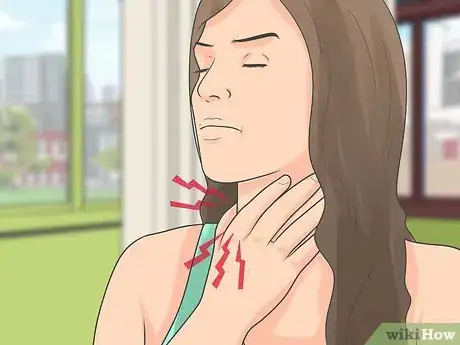
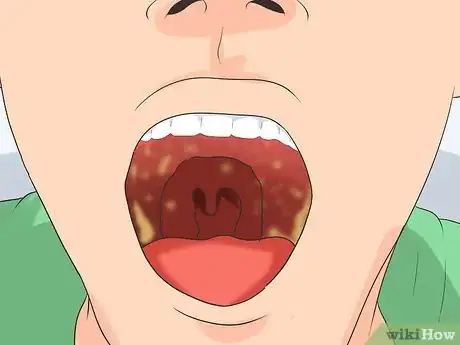

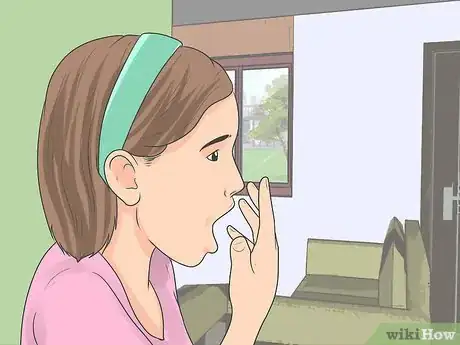

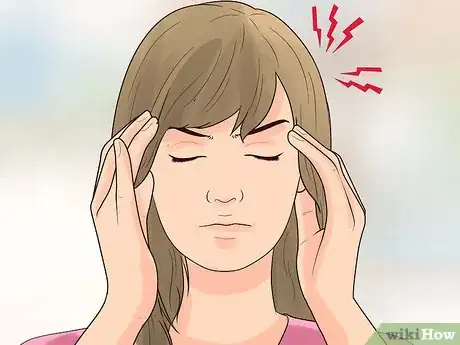

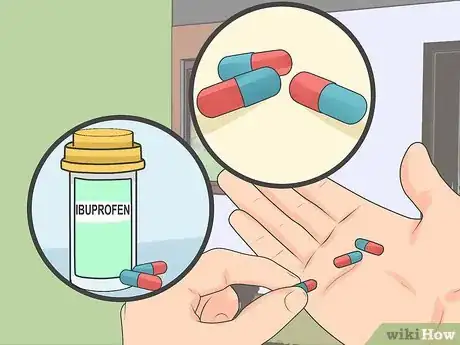
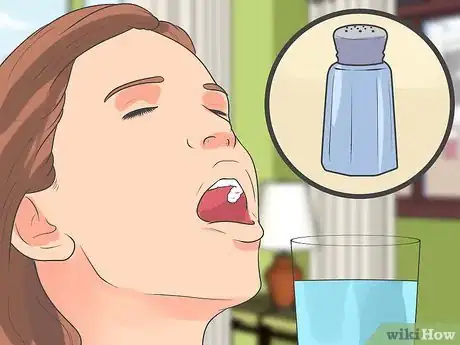


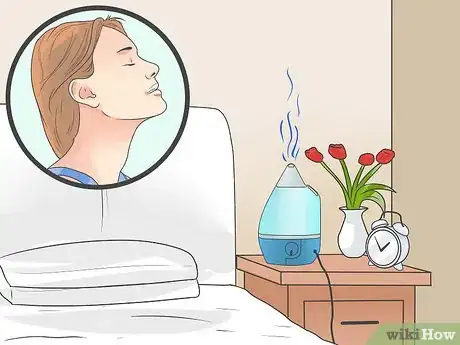


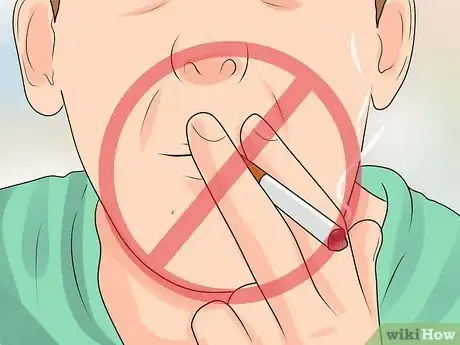

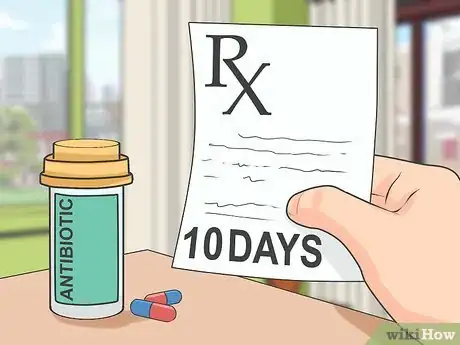
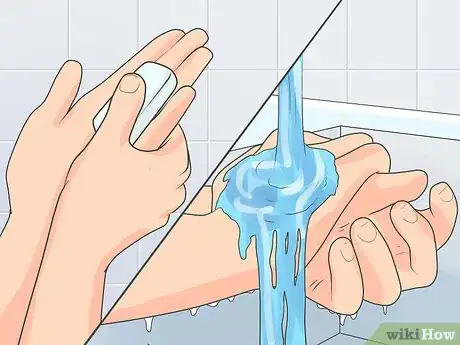
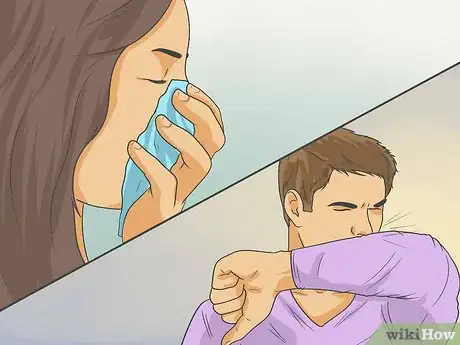
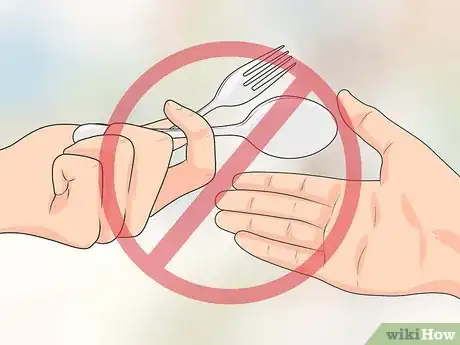
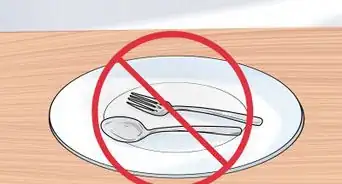
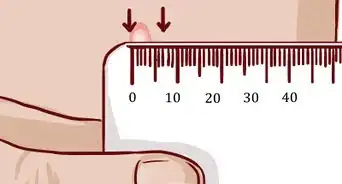


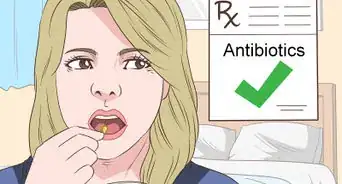
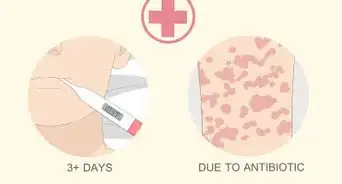





-Step-11.webp)

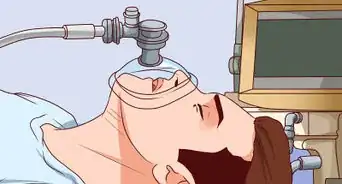







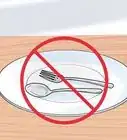

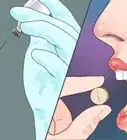




































Medical Disclaimer
The content of this article is not intended to be a substitute for professional medical advice, examination, diagnosis, or treatment. You should always contact your doctor or other qualified healthcare professional before starting, changing, or stopping any kind of health treatment.
Read More...